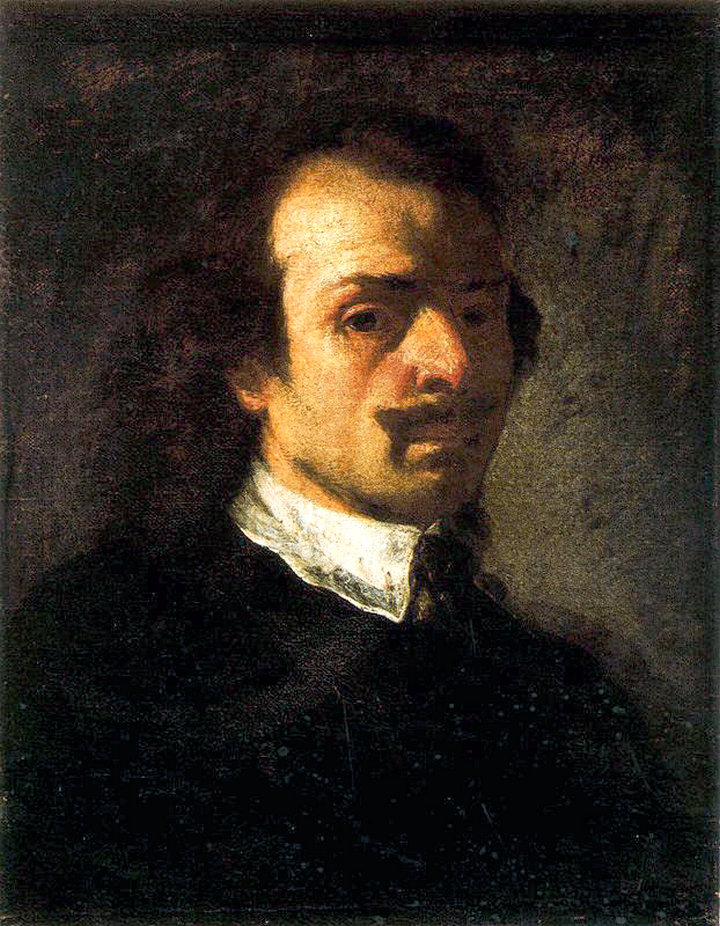Pier Francesco Mola, called Il Ticinese (Coldrerio, February 9, 1612 – Rome, May 13, 1666), was a Swiss-Italian painter of the High Baroque, mainly active around Rome. With his looser style and handling, more naturalistic palette, and interest in exploring landscape elements, Mola differs from the prevailing, highly-theoretical classicism of such leading 17th-century Roman painters as Andrea Sacchi.
Mola was born at Coldrerio (now in Ticino, Switzerland). He was the son of an emigrant architect in Rome, Giovanni Battista Mola, and matured his style traveling between Bologna and Venice between 1633 and 1647. He had initially studied with Prospero Orsi and then with Cavalier Giuseppe d’Arpino, then as Assistant of Domenichino was influenced by the soft shapes of Guercino.
His career in the first years of his career is not very good. From 1633 he accompanied his father in his work in Northern Italy and worked for a long time in Venice and Bologna and took up the developments in painting. In 1637 he painted the painter and eraser Pietro Testa in Lucca. In his birthplace, he received the commission for three frescos in the Oratorio Madonna del Carmelo in 1641. For two years he was assistant professor at Francesco Albani in Bologna.
In Bologna he would have had a new master Francesco Albani and he knew the painter Andrea Sacchi. With the exception of the years 1633–40 and 1641–47, during which he resided in Venice and Bologna, respectively, he lived for the rest of his life in Rome.
His early training was with the late mannerist painter Cavalier d’Arpino, and he worked under the classicizing Francesco Albani.
In 1647 he returned to the family in Rome, where he painted romantic landscapes in chiaroscuro. Here he also expressed his eclectic art painting frescoes where he merged the Renaissance of Raphael and Michelangelo with the soft colors of Titian and Guercino.
Mola was admitted to the Accademia di San Luca in 1655, but in 1662-63 he practiced the office of the princeps for only one year, and his illness also prevented him from doing so.
His masterpiece as a fresco painter is widely considered to be the fresco in the gallery of Alexander VII in the Quirinal Palace Gallery, entitled Joseph making himself known to his Brethren (1657). However, Mola is considered to have been better as a painter of small pictures, especially landscapes. He made six versions of The Flight into Egypt, the earliest and best of which is the first one, The Rest on the Flight into Egypt.
Mola received the order for the Fresco Joseph in 1656 from Pope Alexander VII to his brethren to recognize in the Sala Gialla of the Quirinalspalast, which today is regarded as its main work. Among his clients was Christina of Sweden, who had been in Rome since 1655 after her conversion to Catholicism. He was unable to make an invitation to the French court as a companion of Cardinal Flavio Chigi because of a disease.
He was one of the artists who was supposed to paint the huge Palazzo Doria Pamphilj in Valmontone, but in 1659 he fell into protracted judicial battles because of the execution with the princely client, which he finally lost in 1664.
He was elected Principe of the Accademia di San Luca, the Roman artists’ professional association, in 1662, but his last years were neither profitable nor prolific. Among his pupils were Jean-Baptiste Forest, Antonio Gherardi, and Giuseppe Bonati.
In addition to Rome, pictures of Mola can be found in the large painting galleries in London, New York and Los Angeles, but his drawings have been collected by the Louvre, but they are mainly found in the Kunstakademie Düsseldorf, whose founder Lambert Krahe acquired his art objects acquired in Italy in 1778 To the Bergische Landsstands, among them also a convolute with drawings Molas.
